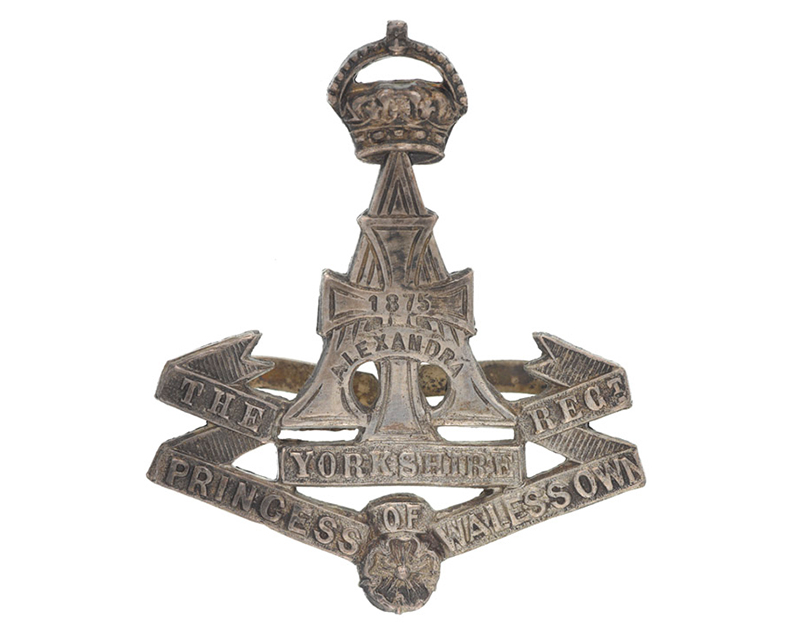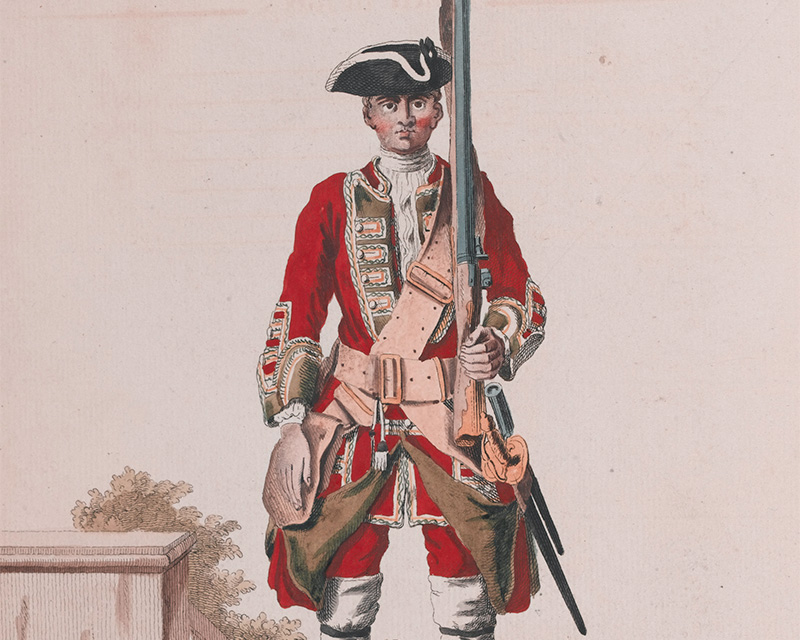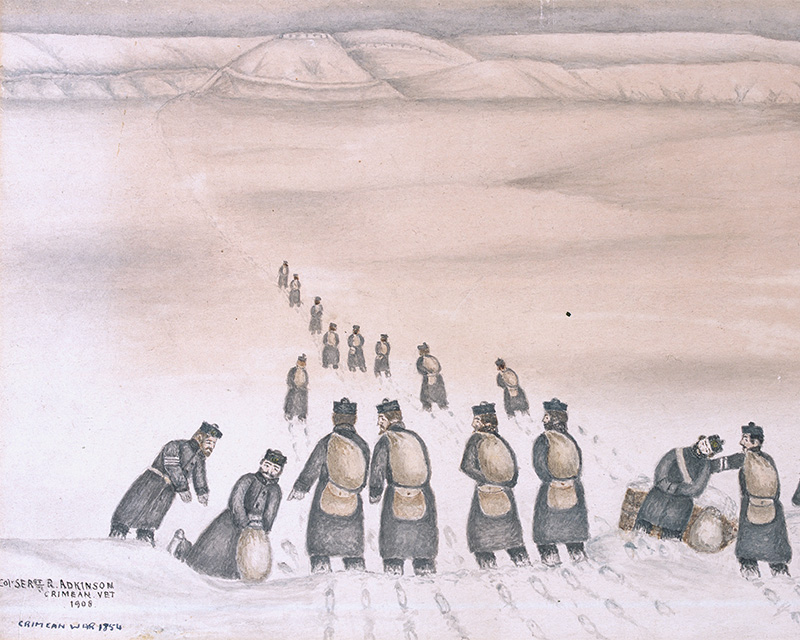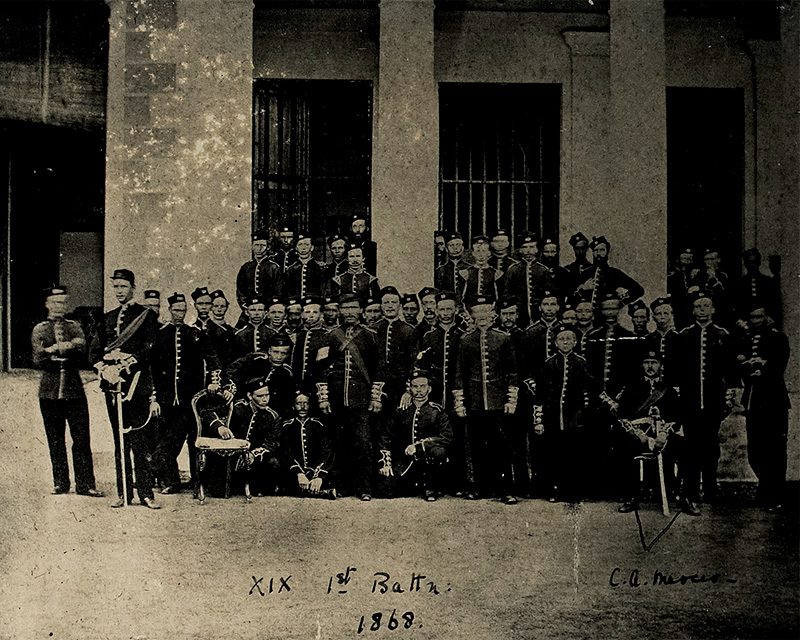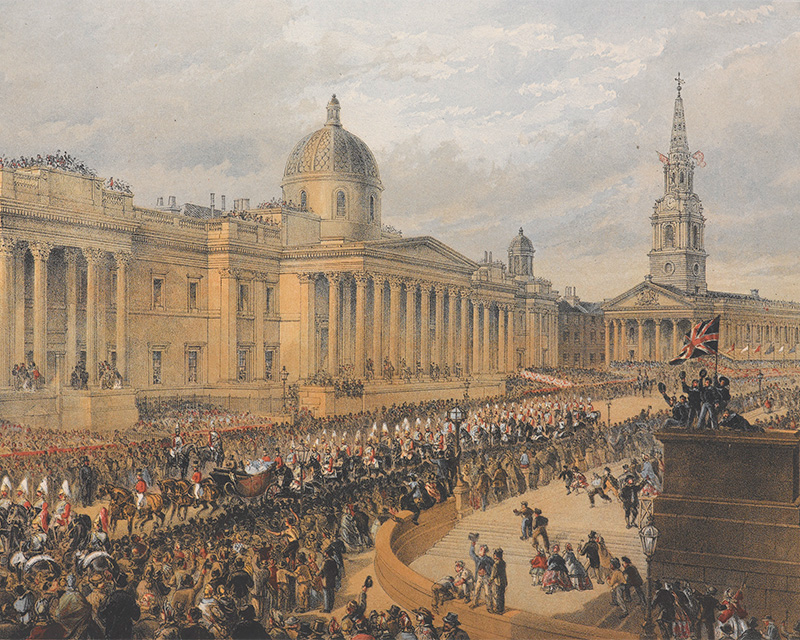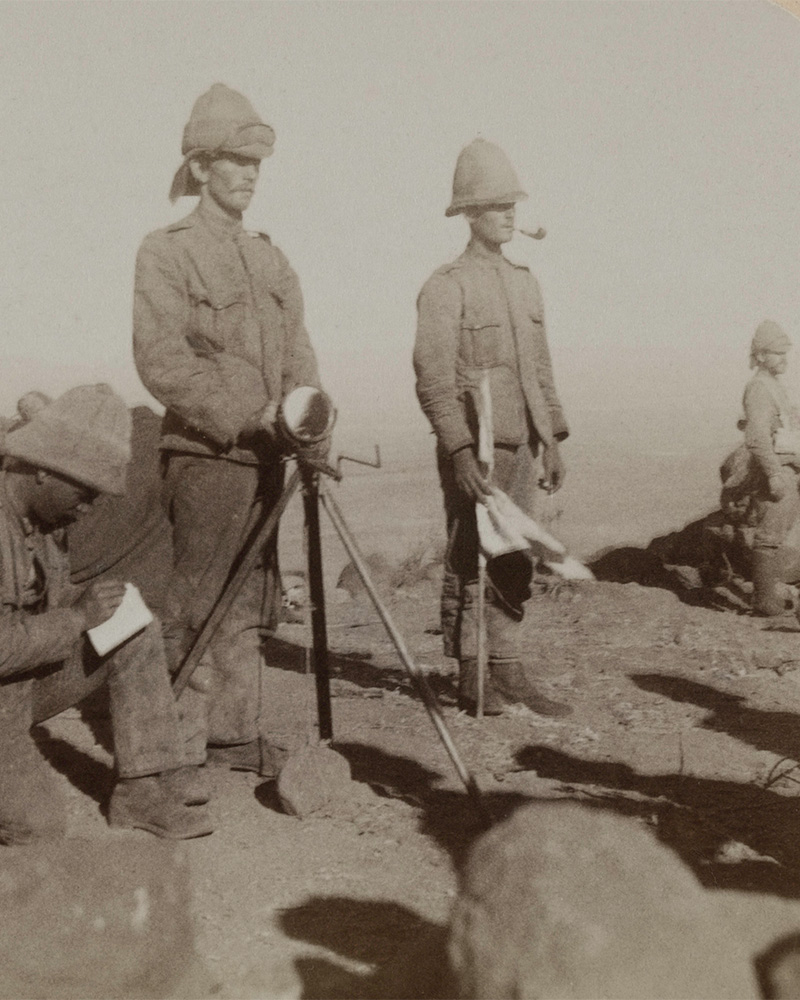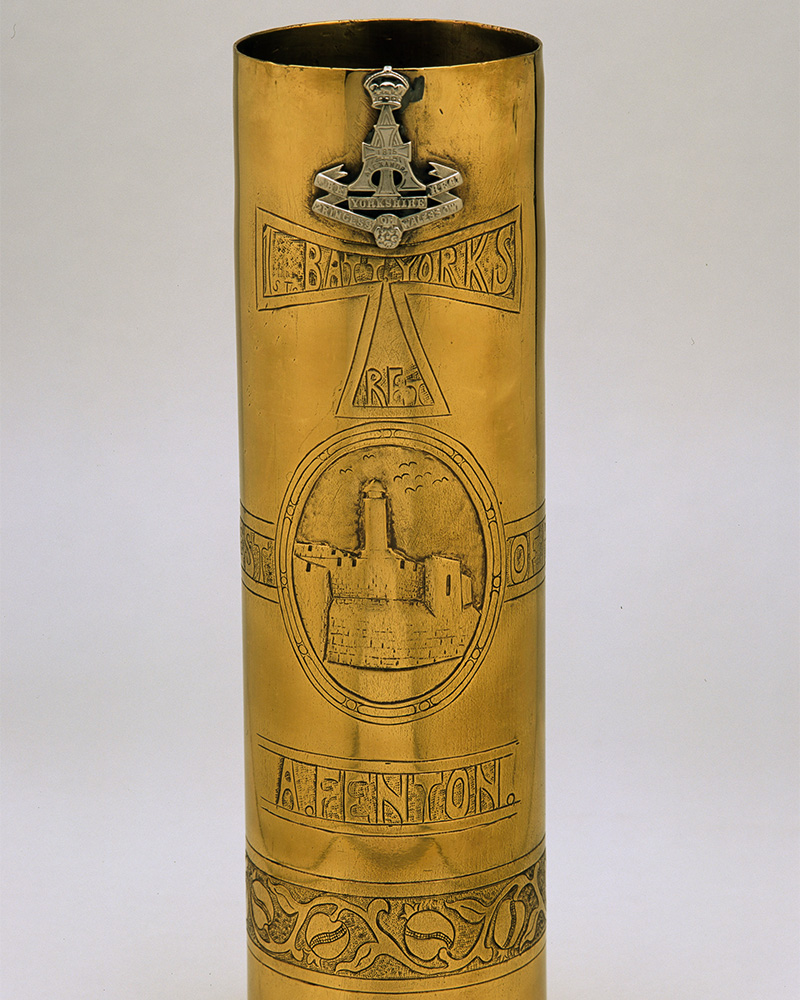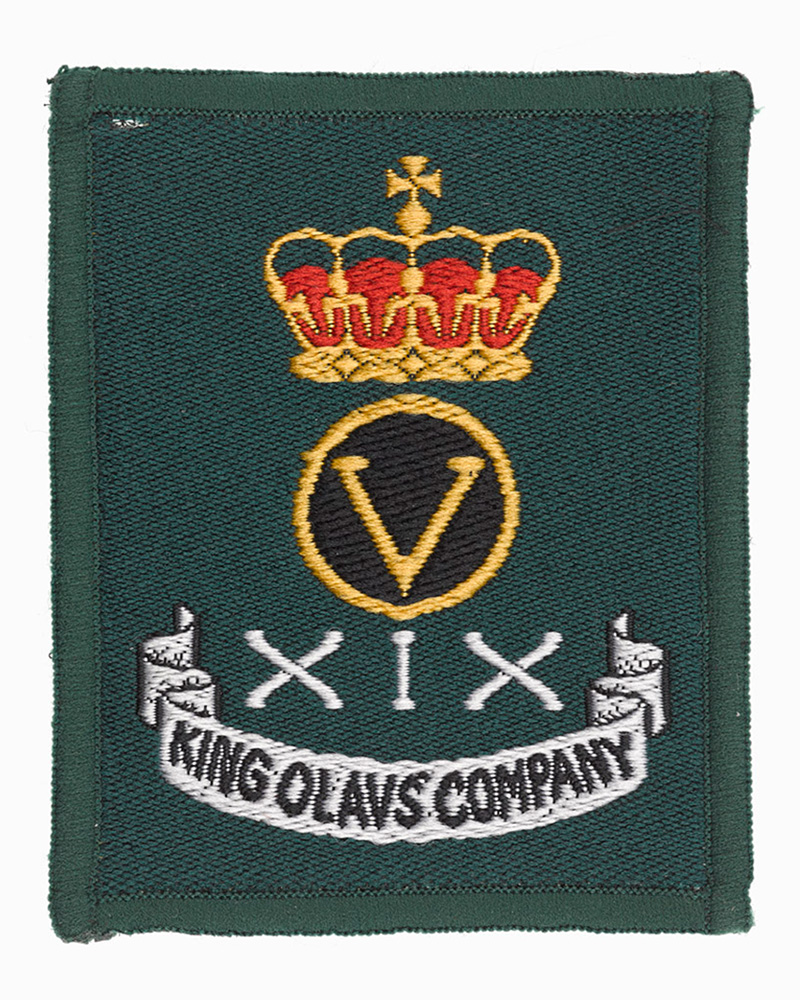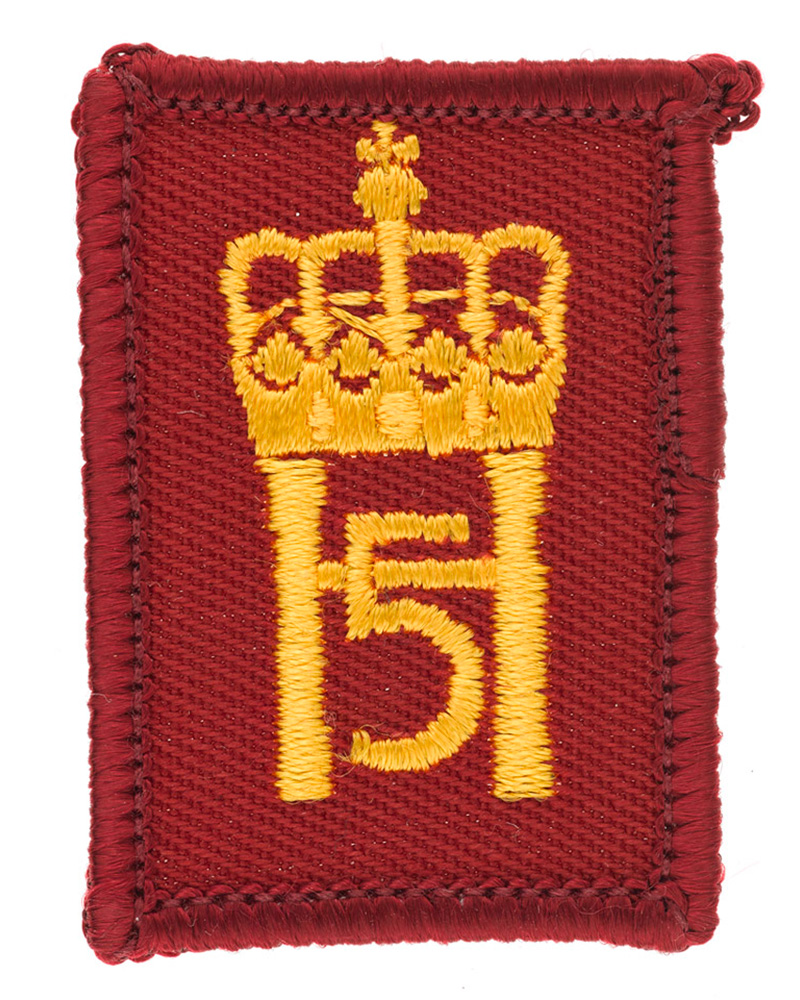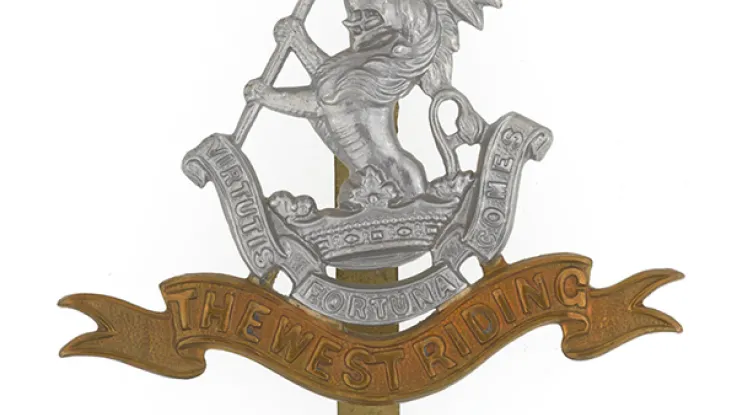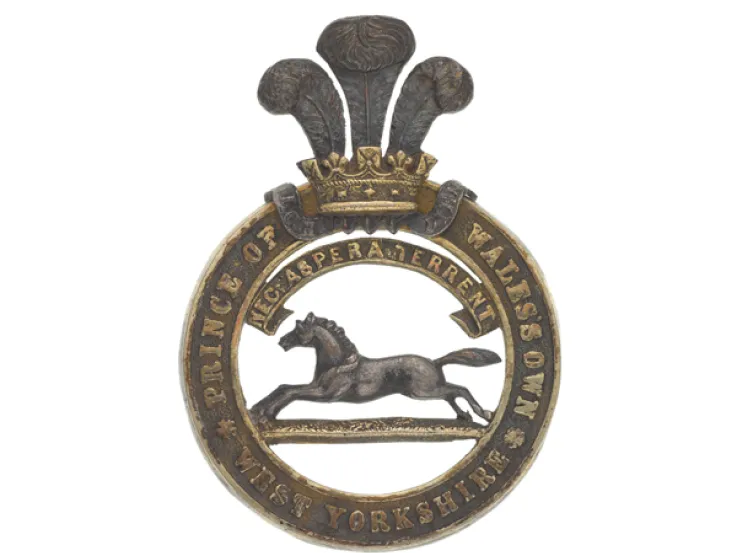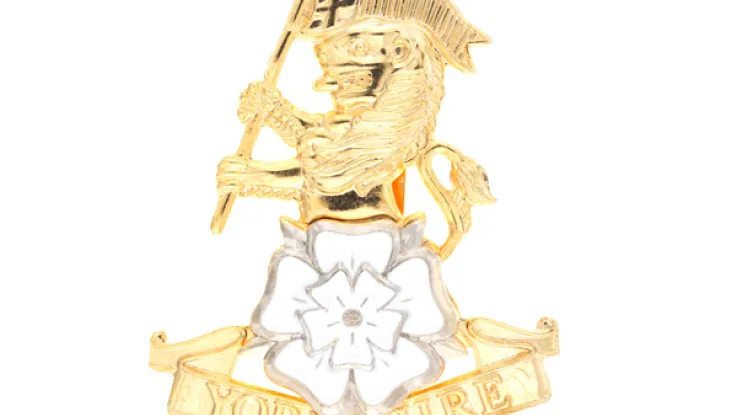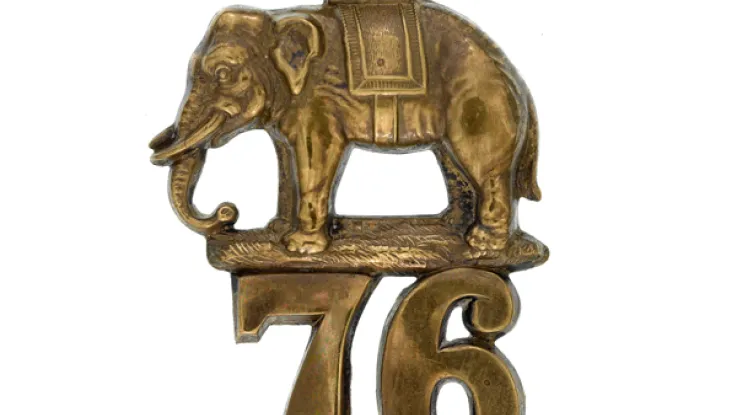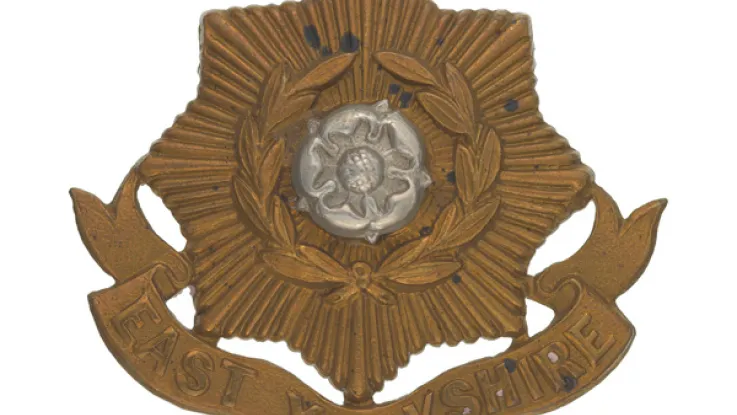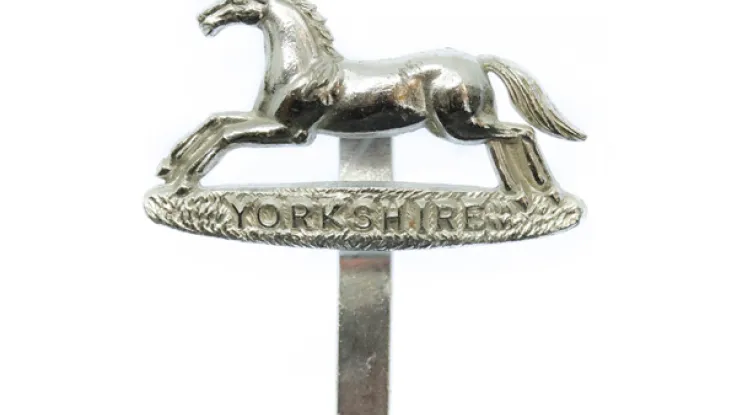Explore more from Regiments and Corps
The Green Howards (Alexandra, Princess of Wales’s Own Yorkshire Regiment)
6 minute read
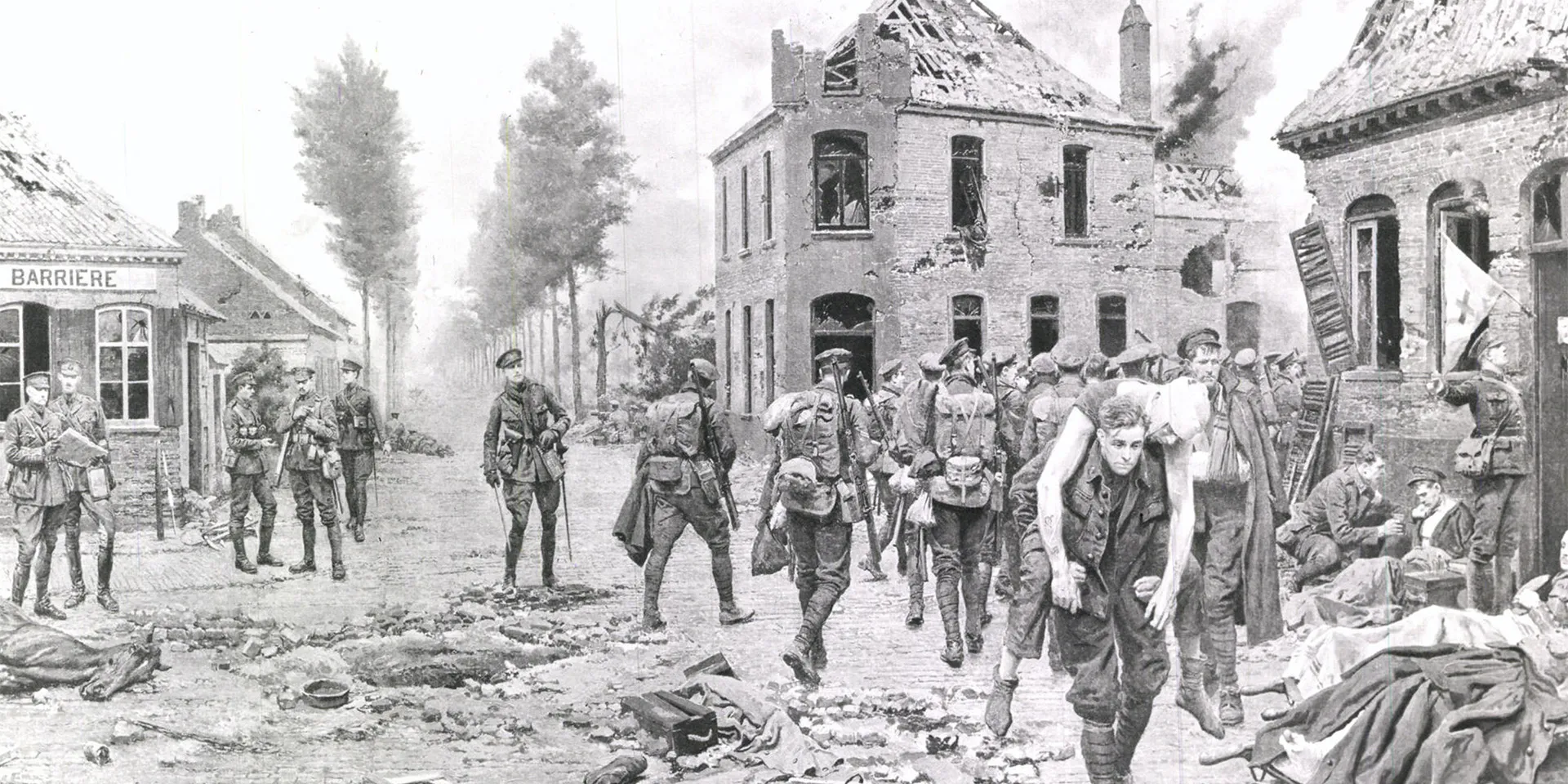
2nd Battalion, The Green Howards (Alexandra, Princess of Wales’s Own Yorkshire Regiment) holding the Menin crossroad, October 1914
Origins
In November 1688, William of Orange landed in Devon to seize the throne from his father-in-law, King James II, in what became known as the 'Glorious Revolution'. Later that month, Francis Luttrell, a local squire, gathered several independent companies of infantry into a single regiment to support William’s cause.
Early deployments
The new regiment first saw active service at the Battle of the Boyne (1690) in Ireland. It continued to fight for William in Flanders, including at the Siege of Namur (1695).
It would return to Flanders several times over the next hundred years, most notably during the War of the Spanish Succession (1702-13) and the War of the Austrian Succession (1740-48). The latter service included the battles of Rocoux (1746) and Lauffeld (1747).
Attack and defence
The regiment began the 18th century fighting as marines off the coast of Spain and in the West Indies. It was then used in raiding parties along the Spanish coast in 1719, before garrisoning Gibraltar from 1749 to 1752.
In 1756, it raised a 2nd Battalion. Two years later, this became a regiment in its own right, the 66th Regiment of Foot.
It was back on raiding duties in 1761 during the Seven Years War (1756-63), this time against Belleisle on the French coast. From 1763 to 1771, it was again in Gibraltar, then in Ireland from 1775.
Howard’s Regiment of Foot
During the 1740s, this unit was one of two regiments commanded by colonels named Howard. To avoid confusion, both had the colour of their uniform facings added to their names.
In 1751, Howard's Buffs became the 3rd Regiment of Foot, while Howard's Greens became the 19th Regiment of Foot. The 19th Foot continued to be known informally as the Green Howards. However, this was only made part of its official title in 1921.
Revolutionary Wars
The regiment embarked for North America in 1781, fighting in the War of Independence (1775-83) before moving on to the West Indies for eight years in 1783.
During this period, it gained a county association with the North Riding of Yorkshire, becoming the 19th (1st Yorkshire North Riding) Regiment of Foot in 1782. The early 1790s saw it in Flanders once more, followed by Brittany in 1795 during the French Revolutionary Wars (1793-1802).
The regiment began its first Indian deployment in 1796, fighting at Seringapatam (1799) during the Fourth Mysore War (1798-99). Service in the Kandian Wars on Ceylon (now Sri Lanka) followed. The regiment lost a detachment of 178 officers and men in an 1803 massacre there. The 19th then fought against the Travancore rebellion (1808), and then garrisoned the island of Mauritius. It only returned to England in 1820.
Victorian period
The regiment spent the next 30 years in Ireland, the West Indies, the Mediterranean and Canada. It then served in the Crimean War (1854-56), capturing seven Russian drums in its assault on the Great Redoubt on the Alma. It also served during the Siege of Sevastopol (1855).
In 1857, it sailed from England to serve during the Indian Mutiny (1857-59), remaining on the subcontinent until 1871.
Meanwhile, in 1858, the regiment again raised a 2nd Battalion. This was mainly used for garrison service in England, Ireland and India, although it also fought in Burma in 1863 and 1892, and in the Tirah expedition of 1897 on India's North-West Frontier.
1st Battalion moved to Canada in 1881. Over the next 30 years, it served in the Sudan in 1885 and 1910, and throughout the Boer War (1899-1902).
Alexandra of Denmark
In 1875, 1st Battalion had been presented with new colours by Alexandra of Denmark, the Princess of Wales. The regiment subsequently incorporated her cypher, coronet and the Danish cross into its cap badge and added ‘Princess of Wales’ to its title.
In the Army reforms of 1881, the regiment’s title changed to The Princess of Wales's Own (Yorkshire Regiment). Then, following Alexandra’s coronation as queen consort to King Edward VII in 1902, its title changed again, becoming Alexandra, Princess of Wales's Own (Yorkshire Regiment).
In 1914, Alexandra became the regiment’s colonel-in-chief, the first ever female royal to take on such a role.
First World War
By the outbreak of the First World War (1914-18), 1st Battalion was in India. It remained there throughout the conflict. By contrast, 2nd Battalion spent the entirety of the First World War on the Western Front, fighting in many major engagements. During the war, the regiment also raised 23 Reserve, Territorial, New Army and Garrison battalions that served at home and in most overseas theatres.
Inter-war years
In 1919, 2nd Battalion was posted to Ireland for four years, serving there during the War of Independence (1919-21). This was also a busy time for 1st Battalion, including service in the Third Afghan War (1919) and Palestine. It returned to Palestine in 1938.
Between them, the two regular battalions spent 14 years in India during the inter-war period. They also both served in Shanghai in the late 1920s.
Second World War
On the outbreak of the Second World War (1939-45), 1st Battalion was in England and deployed straight to France. From there, it joined the disastrous British campaign in Norway in April 1940 and later served in Iraq, Iran, Palestine, Syria, Egypt, Italy and, from March 1945, in Germany.
Having moved to India in 1931, 2nd Battalion stayed there throughout the conflict, also fighting in Burma in 1944.
In 1942, Queen Alexandra’s son-in-law King Haakon VII of Norway became the regiment’s colonel-in-chief. His two successors to the Norwegian throne, King Olav V and King Harald V, continued this family tradition.
Post-war deployments
Like all other line infantry regiments, the unit was reduced to a single regular battalion in 1948, although 2nd Battalion was briefly revived from 1952 to 1956 to serve in Egypt and Cyprus.
The regiment was deployed to Sudan in 1947 and Malaya from 1949 to 1952. However, it spent most of the 1950s and 1960s in Germany with the British Army of the Rhine, barring brief periods in British Honduras (now Belize) and Libya in 1963 and 1968 respectively.
During the 1970s, it was posted to Northern Ireland seven times and once to West Berlin in 1976. A further three tours to Northern Ireland followed between 1987 and 2004. It also garrisoned the Falkland Islands in 1989.
In 1996, its soldiers served as peacekeepers in Bosnia. Three years later, the regiment’s ‘B’ Company carried out similar duties in Kosovo. It also spent five years in Germany in the 1990s, followed by a final tour to Northern Ireland in 2002 and service in Afghanistan in 2004.
Legacy
In 2006, it merged with The Prince of Wales’s Own Regiment of Yorkshire and the Duke of Wellington's Regiment (West Riding) to form The Yorkshire Regiment.
Regimental museums
The National Army Museum works with a network of Regimental and Corps Museums across the UK to help preserve and share the history and traditions of the Army and its soldiers.
Discover more about The Green Howards by visiting The Green Howards Museum in Richmond, North Yorkshire.

